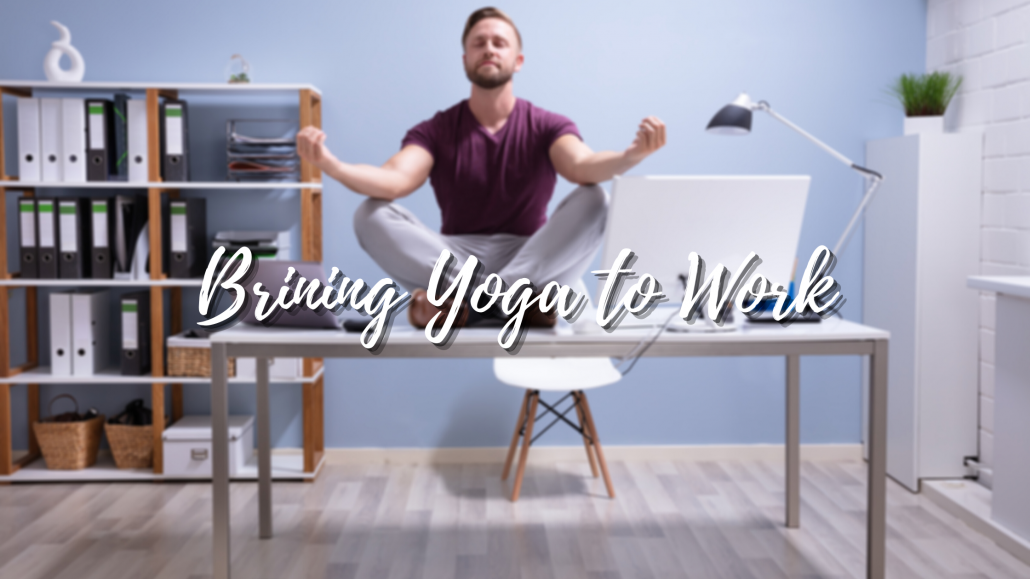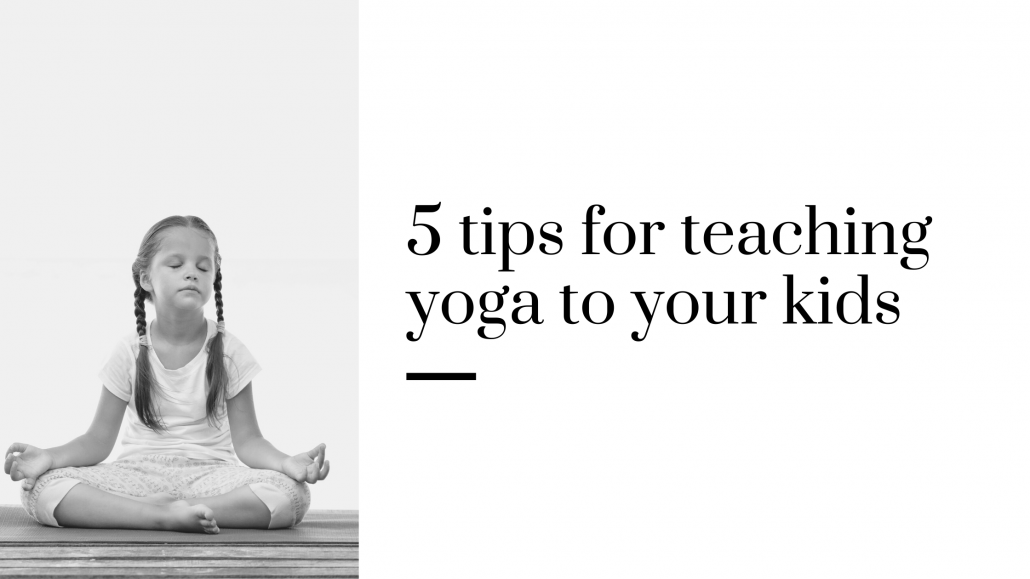Bringing Yoga to Work
While the time spent on your yoga mat at class several days a week certainly helps strengthen and soothe your body, it’s no match for the stress and tension you put on your body during the rest of the week. Whether you sit at a desk for hours on end, run around watching your children, or work a manual labor job, work places a lot of strain on your body and mind.
Most stress is a mental pressure we force onto our physical bodies, especially in the corporate setting where people operate furiously with their minds rather than their bodies. Simply hitting the gym after work won’t fix the problem. Instead, your body and mind need to be brought together to find a sense of peace and relaxation. Yoga is a perfect tool for transforming the workplace into a less stressful, more peaceful environment.
Bringing yoga to work with you can offer so many benefits. It lowers stress levels, gives you healthy energy shots (instead of that extra cup of coffee), and boosts your creativity. Any change in body posture can change your whole mindset.
We often get the question: “But how will I find the time to squeeze yoga into my work day?” The thought of sneaking out for a lunchtime yoga class may be bizarre, especially with how much we are each asked to do on the job. But that doesn’t mean you have to stay stagnant all day.
You surely receive at least one or two breaks during your day. Instead of grabbing another cup of coffee or checking your social media feeds, spend your time wisely. There are many effective yoga moves you can do right at your desk (or in the break room, or outside) that will not only give you a mental break but also ensure your back, arms, hips, and wrists remain in working order.
Yoga Poses You Can Do at Work
Seated Crescent Moon – Lift your arms overhead and stretch your fingers wide. Lean to the left, taking three deep breaths. Repeat on your right side.
Why? Our side body tends to collapse when we hunch over a computer or stack of papers. This can cause neck and shoulder discomfort. This pose brings you a taller spine, clearer head, and sharper focus.
Wrist and Finger Stretches – Extend your arms to your side and draw five to ten circles inward and outward through your wrists. Then, quickly spread your fingers and close your fists, repeating five to ten times to shake off tension. Finally, stretch one arm out and bend the wrist inward then outward, using your other hand for a counterstretch.
Why? Desk work causes a buildup of tension in the muscles of your fingers, hands, and wrists. You need some extra blood flow in these areas, typically every two hours.
Chair Pigeon – While seated in your chair with both feet planted on the ground, cross your right leg over your left at a 90-degree angle (creating the figure 4). Keep your foot flexed and ankle joint strong. Maintain an equal weight distribution between your sitting bones, while keeping your back straight. Take the right hand and press it into your inner knee/thigh to open your hip a little more while also helping you to extend up through your spine. Hold for 10-15 breaths before switching sides.
Why? When we cross our legs, especially one side more than the other, we create an imbalance in the hips and lower spine. This pose helps even things out.
Neck Roll – Close your eyes, letting your chin drop to your chest. Move your head slowly in a circle while keeping your shoulders loose and relaxed.
Why? At work, we often fix our gaze for minutes or hours at a time at one point. And often our computers are below eye-level, causing our necks to experience unnecessary tension. This pose helps us stretch and remember to move more often.
Breath Work (Pranayama) – At your desk you can practice breathing exercises throughout your day especially during points of high stress. Drape your eyes closed and begin to relax your body and mind while keeping your spine extended up right. Notice your natural breathing first drawing in and out of your nose. Watching a few organic breaths mindfully will zip you into the present moment. Then when ready, begin to deepen your breath, count to a beat of 5 for the inhale and a beat of 5 for the exhale. With practice you may be able to work up to a beat of 8 for both inhale and exhale. Repeat 10 times. Voila, you have relieved some much needed tension by simply slowing down your breath, having a one-pointed focus, and clearing your mind of clutter.
So the next time you feel stressed, overworked, or brain-dead, spend five minutes practicing a few of these yoga techniques. We guarantee you’ll find yourself feeling refreshed. And your bosses will appreciate the added productivity of this new form of workday self-care.
If you’re looking to bring yoga classes into your workplace with a qualified instructor, Yoga Fever offers Corporate Yoga. Our team travels to you either on your lunch break, before or after work. Whatever is convenient, we can make it work. Call the studio for pricing or email us at info@feverycs.com






